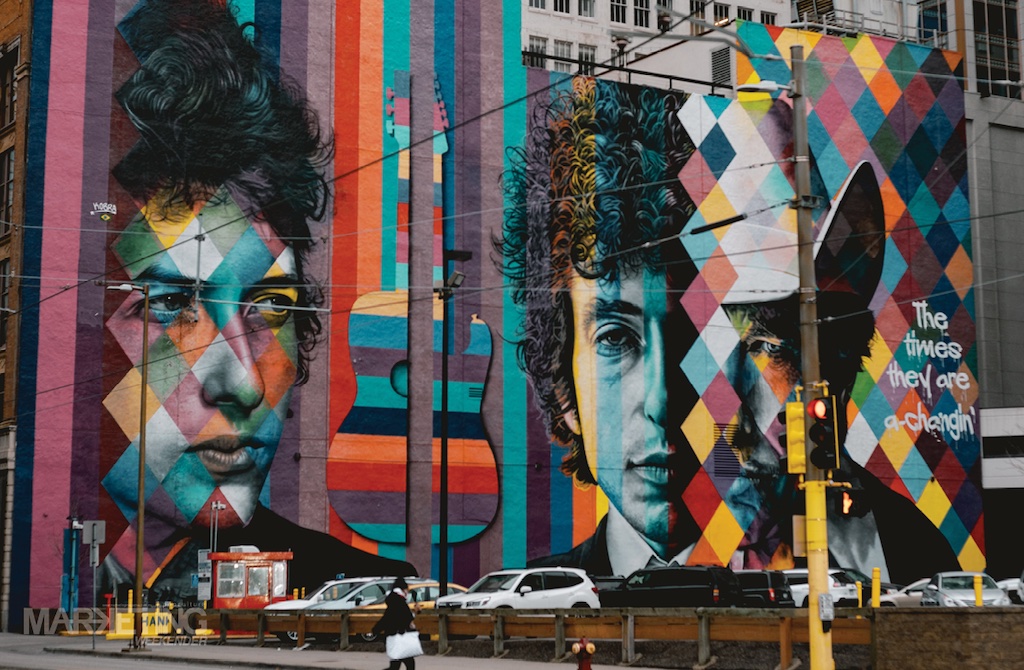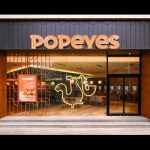By Sandeep Joseph
Bob Dylan’s lyrical genius is well known. Winning the Nobel Prize for Literature seals any argument about his greatness as a poet.
But could he in any way be a model for marketers and entrepreneurs?
As the revered rockstar poet turns 82, let’s look at what we as marketers can learn from his career.
When starting out, it’s wise to follow your heroes, learn voraciously and seek inspiration
Growing up in his teens in the middle of nowhere, also known as the American Midwest, Dylan started listening to Chuck Berry and Little Richard. Then he got into folk music, becoming a staunch devotee of Woody Guthrie. In 1961, not yet 20 years old, Dylan travelled to New York City in the hope that he could visit his ailing idol Woody in the hospital. “I said to myself I was going to be Guthrie’s greatest disciple,” he wrote in his autobiography “Chronicles: Volume One.”
In New York began his Great Osmosis: he started absorbing stacks and shelves of folk songs from books and primitive recordings. He was a great student of what had come before him. His world famous anthem for peace Blowing in the Wind, was recorded within 13 months of coming to the East coast, when he was 21 years old. Interestingly, the melody for this song is loosely based on the African-American gospel song “No More Auction Block.”
Mr. Dylan’s sometime girlfriend, Delores Dixon, used to perform “No More Auction Block” regularly and he had a record of this song as well by Odetta, a black singer who was the voice of the Civil Rights movement. He absorbed the music and transformed it to the protest song early hit that made his name. Was he original or copying? Great artists steal and are inspired to mutate stuff.
Pivot when you want to or need to, even if you risk losing your audience
Martin Scorsese, a passionate music fan and famous filmmaker, captured a key moment in Dylan’s journey in his film No Direction Home. Dylan, at the Newport Folk Festival, had just shocked his legions of folk fans by suddenly going electric with “Like A Rolling Stone”. “How does it feel” he snarled, and got a fair amount of boos in return.
In Scorsese’s film at a concert in Manchester in 1965, a voice from the crowd shouts “Judas!”. Dylan replies: “I don’t believe you, you’re a liar” before telling his band to “Play it f%^& loud!” as they launch into his electric radio hit.
This iconic moment in music has been deeply researched. Later studies claimed the Newport audiences may not have been that upset with the man himself, but possibly at the quality of the sound set-up in the hall. And the fact that he only played 15 minutes.
Either way, Dylan had set off down a new artistic highway, fearlessly. And his reputation never dipped. More conventionally defined entrepreneurs like Jobs have taken risks too, moving seamlessly from computers to phones, for instance, and his successor Tim Cook has ventured into tablets, audio and more. From being a cult brand, Mac is now a mass premium brand.
Develop key skillsets: Storytelling is the ultimate weapon and differentiator
Dylan’s narrative lyrics are exceptional. Learning from early masters like Chuck Berry, he reached the summit of lyricism to tell stories that have become part of cultural memory. Whether it be the story of Rubin “Hurricane” Carter the innocent boxer jailed, or the balladlike “Tangled Up in Blue” the wordsmith poet smashes the mould of conventional pop rock to serve up songs that paint arresting visual images.
There is a reason he is the only musician from hundreds of thousands to win a Nobel Prize.
“Pistol shots ring out in the barroom night
Enter Patty Valentine from the upper hall
She sees a bartender in a pool of blood
Cries out, “my God, they killed them all”
Here comes the story of the Hurricane
The man the authorities came to blame
For somethin’ that he never done
Put in a prison cell, but one time he coulda been
The champion of the world”
From Hurricane
And this graphic masterpiece:
Early one mornin’ the sun was shinin’
I was layin’ in bed
Wondrin’ if she’d changed at all
If her hair was still red
Her folks they said our lives together
Sure was gonna be rough
They never did like Mama’s homemade dress
Papa’s bank book wasn’t big enough
And I was standin’ on the side of the road
Rain fallin’ on my shoes
Heading out for the east coast
Lord knows I’ve paid some dues
Gettin’ through
Tangled up in blue
From Tangled Up in Blue
Understand your audience and craft, through practice. Put in the time.
“You had to have a wide repertoire, and you had to know what to play and when because I was playing for small crowds, sometimes no more than four or five people in a room on a street corner. Some songs were intimate, some you had to shout to be heard.”
So said Dylan about his early days.
He understood his audience by playing prolifically. And in one of those cosmic coincidences, while he was playing dives in New York, across the pond at the same time, the Beatles had developed their tight sound and understood their own dynamics by playing hard gigs for 3 years in clubs in Hamburg.
They were ready for their moment in the spotlight because they had worked through the so-called 10,000 hours or more of mastering their performance craft.
Set the pace and ride trends early
Good entrepreneurs can spot opportunities before they are visible to the masses. Tony Fernandes started low cost airlines before anyone in SE Asia, Carsome is another example of being early to market, staying the course and winning big.
Dylan actually saw the Byrds cover his song Mr Tambourine Man, saw how they had a hit with a more contemporary sweet electric sound, and ended up switching tracks from folk to electric and rock soon after.
Dylan is also a music video pioneer: he made the first lyric video for Subterranean Homesick Blues, for example.
But he never released a video for his 1965 immortal “Like a Rolling Stone” until 2013 when he released a memorable interactive music video using the latest web tech.
The video features different TV channels running their own content, like news or game shows or dramas or property shows, but each features characters lip-syncing to the song. If you change the channel, the song continues seamlessly.
My words are inadequate to describe how magical it feels and sounds, even today: check it out.
Do what you believe in, passionately, even if you don’t get the ultimate result
You don’t have to be number 1 or even have a number 1 record to succeed. In a career spanning over 600 songs and 59 years, Dylan didn’t have a single, not even one, Number 1 Billboard hit. That was not until his latest release, 2020’s Murder Most Foul, which was bold with a ridiculously unfit-for-radio-length of 16 minute and 56 seconds.
The subject was not millennial friendly either: it’s about the assassination of JFK and was released at the height of the pandemic.
Twas a dark day in Dallas, November ‘63
A day that will live on in infamy
President Kennedy was a-ridin’ high
Good day to be livin’ and a good day to die
Being led to the slaughter like a sacrificial lamb
He said, “Wait a minute, boys, you know who I am?”
“Of course we do, we know who you are”
Then they blew off his head while he was still in the car
Shot down like a dog in broad daylight
Was a matter of timing and the timing was right
You got unpaid debts, we’ve come to collect
We’re gonna kill you with hatred, without any respect
We’ll mock you and shock you and we’ll put it in your face
We’ve already got someone here to take your place
The day they blew out the brains of the king
Thousands were watchin’, no one saw a thing
It happened so quickly, so quick, by surprise
Right there in front of everyone’s eyes
Greatest magic trick ever under the sun
Perfectly executed, skillfully done
Wolfman, oh Wolfman, oh Wolfman, howl
Rub-a-dub-dub, it’s a murder most foul
Talk about persistence and doing your own thing, come what may!
Know when to make your moves
Famously, the CEO of Blockbuster had a chance to buy Netflix for 50 million in 2000. Instead he scoffed in the meeting at Netflix’s founders Randolph and Hastings, and they left crestfallen. Lo and behold, ten years later, Blockbuster lived up to it name and went bust.
Michael Jackson famously asked Paul McCartney of the Beatles what to invest in, and Paul told him to invest in back catalogues of artists. Next thing Paul knew, Jackson outbid Paul to buy the rights to 250 Beatles songs, estimated to be worth close to USD 1 billion today.
One can argue, rightfully, that timing and predicting the market can be hard indeed. Bob Dylan has proved good at it though: he sold his song catalogue and therefore royalties for USD 300 million to Universal Music, and later sold his master recordings to Sony for USD 200 million.
A slew of other artists like David Bowie, Bruce Springsteen and even The Killers, have also cashed in their catalogues.
There’s so much more to observe, listen to, read up on and learn from, from this unique artist, poet, creator, storyteller, musician. Even for us marketers, grappling with uncertainty in a changing landscape. Coz Dylan knew one thing for sure: the times they are a changin’, and a hard rain’s a-gonna fall, and the answer is blowin in the wind.
Sandeep Joseph is the CEO and co-founder of Ampersand Advisory, a strategic media and data-driven consultancy. The company’s mission is “business results now!” and it has won numerous local and international awards. The views expressed here are the author’s own: you can debate with him at [email protected]
MARKETING Magazine is not responsible for the content of external sites.
After 20 years of evolving technology, shifting market trends, and adapting to changing consumer behaviour, the media landscape has nearly reached saturation.
We’ve optimised to the fullest, providing advertisers with abundant choices across technology, platforms, data-driven marketing, CTV, OTT, DOOH, influencer marketing, retail, etc.
Media specialists have diversified, but with more options comes the challenge of maintaining income growth. The industry is expanding, but revenue isn’t keeping pace.
Now, we’re at a TURNING POINT: time to explore and harness new sustainable revenue streams. While GroupM forecasts a 7.8% global ad revenue growth in 2024, challenges like antitrust regulation, AI and copyright issues, and platform bans persist.
Collaboration is key: partnerships that thrive on synergy, shared values, and aligned goals are becoming increasingly essential.
Hence, the Malaysian Media Conference, in its 20th year, has assembled the partners and players under one roof on October 25 for a day of learning, sharing, and exploring.
REGISTER NOW










